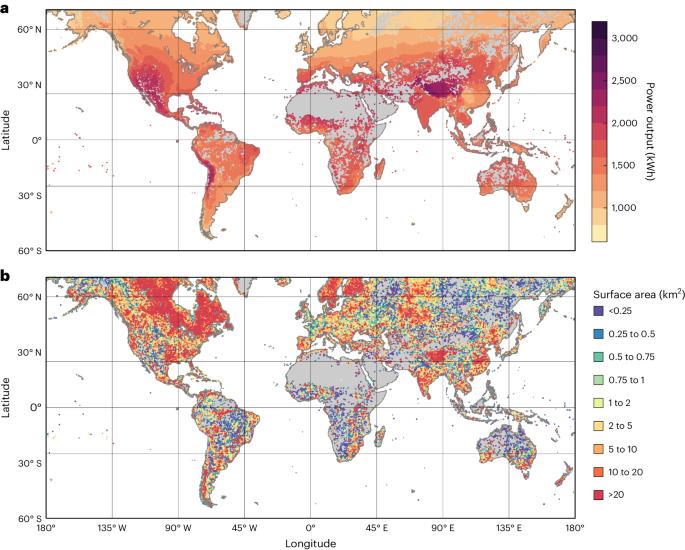Decarbonization potential of floating solar photovoltaics on lakes worldwide
IF 24.1
引用次数: 0
Abstract
As climate change progresses, there is increasing emphasis on net zero and energy system decarbonization. Several technologies are contributing to this agenda, but among these, the growth of solar photovoltaics has consistently exceeded all projections. With increasing land-use pressures, and the expense of building-mounted photovoltaics, water surfaces are increasingly being exploited to host these technologies. However, to date, we lack an understanding of the global potential of floating solar photovoltaics and, as such, we do not yet have sufficient insight to inform decisions on (in)appropriate areas for future deployment. Here we quantify the energy generation potential of floating solar photovoltaics on over 1 million water bodies worldwide (14,906 TWh). Our analysis suggests that with a conservative 10% surface area coverage, floating solar photovoltaics could produce sufficient energy to contribute a considerable fraction (16%, on average) of the electricity demand of some countries, thus playing an important role in decarbonizing national economies. Floating photovoltaics represent a promising alternative to land-based solar panels. A large-scale analysis, comprising 1 million water bodies worldwide, shows that floating photovoltaics could contribute 16%, on average, of the electricity demands of some countries.


全球湖泊漂浮太阳能光伏发电的脱碳潜力
随着气候变化的发展,人们越来越重视净零排放和能源系统去碳化。有几种技术正在为这一议程做出贡献,但其中太阳能光伏技术的增长一直超过所有预测。随着土地使用压力的增加,以及建筑安装光伏发电的费用,水面越来越多地被用来承载这些技术。然而,迄今为止,我们对浮动太阳能光伏发电的全球潜力还缺乏了解,因此,我们还没有足够的洞察力来为未来部署的(适当)区域提供决策依据。在此,我们对全球 100 多万个水体的浮动太阳能光伏发电潜力(14906 太瓦时)进行了量化。我们的分析表明,以保守的 10%水面覆盖率计算,浮动太阳能光伏发电可以产生足够的能源,满足一些国家相当一部分(平均 16%)的电力需求,从而在国民经济去碳化方面发挥重要作用。
本文章由计算机程序翻译,如有差异,请以英文原文为准。
求助全文
约1分钟内获得全文
求助全文

 求助内容:
求助内容: 应助结果提醒方式:
应助结果提醒方式:


